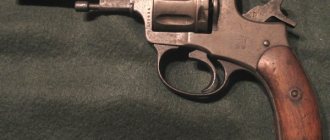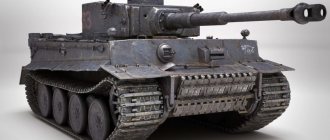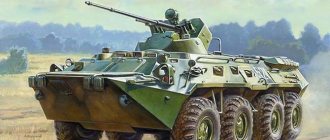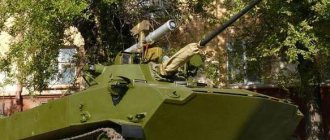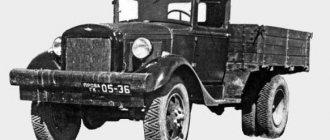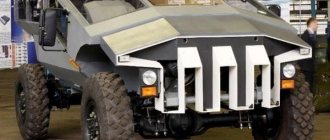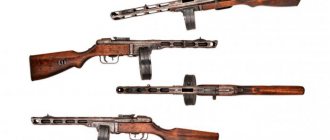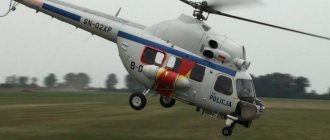History of creation
Everyday operation and combat use of the BTR-60 armored personnel carriers have shown that, on the whole, a successful and promising concept has not been implemented entirely brilliantly. For example, a “dual” power plant with two engines and two gearboxes, while providing the armored personnel carrier with high survivability, made repair and maintenance more difficult. And the GAZ-40 engines themselves were already outdated.
The issue of landing the troops was unsuccessfully resolved - the early BTR-60s did not have a roof, and the motorized riflemen dismounted, jumping from the sides. And on the BTR-60PB with a roof and reinforced weapons in the landing turret, there were tight hatches in the same notorious roof and sides.
To eliminate the shortcomings, it was decided to begin developing an improved armored personnel carrier, which is what the design bureau at the GAZ plant did.
The work was led by I.S. Mukhin. The BTR-70 was adopted for service in 1971, but serial production began only 5 years later. Since 1981, the assembly of “seventies” at GAZ was stopped and the BTR-70 was produced only in Arzamas.
Getting to know the transport unit
The BTR-70 (photo of army equipment is presented below) is a Soviet armored personnel carrier created in the 70s. in Nizhny Novgorod at the Gorky plant. Employees of the design bureau developed a wheeled amphibious armored vehicle, the tasks of which were to provide fire support to motorized rifle units and transport soldiers.
The BTR-70 is an amphibious combat vehicle with all-round armor. The chassis of the armored personnel carrier has an independent suspension - all eight wheels in the vehicle are driven. The characteristics of the BTR-70 allow it to keep up with tanks and successfully overcome water obstacles, trenches and trenches.
Design
The sealed body of the BTR-70 is welded from steel armor with a thickness of 6 to 10 mm. Such armor, taking into account rational angles of inclination, could protect against armor-piercing bullets of normal caliber (in the frontal projection). The power plant located in the stern has changed - they decided not to abandon 2 engines, but now the armored personnel carrier had 8-cylinder ZMZ-4905 engines. At the same time, now both engines worked on the same gearbox - a mechanical one with four stages.
To improve fire safety, the fuel tanks were isolated from the engine compartment and an automatic fire extinguishing system was installed. The driver was able to disconnect the faulty engine from the power transmission directly from the workplace. The design of the water jet and the wave reflector shield has been changed.
Another important change concerned the deployment of troops. On the BTR-70, motorized riflemen no longer sat facing the direction of travel, but back to back, facing the sides. This allowed the soldiers to fire their weapons through 6 embrasures in the sides (three in each). The motorized rifle situation was monitored using 2 observation devices (one per side). To facilitate boarding and disembarking, lower side hatches appeared between the second and third wheels. Armored personnel carriers of later years of production additionally received embrasures in the roof hatches (for upward firing).
The armament of the BTR-70 armored personnel carrier remained unchanged - a 14.5mm KPVT machine gun and a coaxial 7.62mm PKT machine gun.
But their attitude has changed. At first, as on the “sixtieth”, a turret unified with the BRDM-2 was used. Then the tower was retrofitted with a surveillance device, allowing the rear sector to be inspected. And then the machine gun mount was replaced with a BPU-1, the aiming angle of which allowed anti-aircraft fire.
In addition, two AK assault rifles for the crew, as well as two mounted AGS-17 grenade launchers, two Strela-3 MANPADS and an RPG-7 grenade launcher were stowed inside the fighting compartment. Ammunition for turret machine guns is 500 and 2000 rounds (for KPVT and PKT, respectively).
Vehicles based
- “Otsek” - experimental 120 mm self-propelled artillery mount, manufactured in the USSR
- 2S14 “Sting-S” - experimental 85 mm anti-tank self-propelled artillery mount, manufactured in the USSR
- 1L29 "Mercury-B" - SPR-2.
- 15Y56 - combat post vehicle.
- "BTR-Cosmos" - created for the filming of the film "Inhabited Island"
- BTR-70Di-02 "Svityaz" (KShM "Svityaz") - command and staff vehicle, created in Ukraine
- BMM "Ark" - armored medical vehicle, created in Ukraine
- BREM-2000 (BREM-7K) - armored repair and recovery vehicle, created in Ukraine
- UDS-70 - training and operating stand, created in Ukraine
- KM-70 (BTR-MK) - a command vehicle, based on the BTR-70M, created in Belarus. The tower has been removed. Navigation equipment and radio stations R-123M and R-130M were installed. The crew consists of six people
- MTP-70 (MTP-K) is a technical assistance vehicle, based on the BTR-70M, created in Belarus. A lifting device with a lifting capacity of 1500 kg, a PKT machine gun (7.62 mm), a traction winch, and electric welding equipment were installed. The crew consists of four people.
Modifications
The BTR-70 became the basis for special-purpose vehicles, mainly command vehicles. These are BTR-70KShM, BTR-70MS. Such equipment usually had no weapons; sometimes only one PKT machine gun was retained. They tried to create light self-propelled guns on the BTR-70 chassis, but the firepower of the Zhalo self-propelled gun with an 85mm cannon was considered insufficient, and the 120mm Nona gun went into production on the basis of the next generation armored personnel carrier - the BTR-80.
Currently, various countries are proposing to modernize the “seventies”. The Russian armored personnel carrier BTR-70M is equipped with a diesel engine. In Ukraine, armored personnel carriers under the same name received not only a new power plant, but also enlarged side hatches. Belarusian and Azerbaijani modifications provide for the installation of automatic guns with a caliber of up to 30mm.
Photos of a conventional armored personnel carrier
Another walkaround from the photo of the BTR-70, taken near the DOSAAF driving school in the city of Ulyanovsk. This car is used by conscripts to learn how to drive an armored personnel carrier. Photos taken May 17, 2015.
1
Combat use
The war in Afghanistan was the first conflict for the BTR-70. Moreover, he did not get there right away - at first, new armored personnel carriers were sent to the western districts and to Germany. In Afghanistan, the “seventieth” has proven itself well and much better than the “sixtieth”. More powerful engines were better suited for the mountain climate, and the turret with the BPU-1 installation made it possible to fire at the Mujahideen holed up on high slopes.
At the same time, the BTR-70 was not superior to its ancestor in terms of protection.
This was partially solved with the help of a developed set of mounted armor. And to increase firepower, an AGS-17 grenade launcher was sometimes installed on the turret.
After the collapse of the USSR, the BTR-70 participated in armed conflicts in the post-Soviet space - in Transnistria, Abkhazia, and Chechnya. Currently, armored personnel carriers are used by Ukraine in clashes with the Donbass republics.
In the 90s, Turkey, having purchased armored personnel carriers that previously belonged to the NPA of the GDR from the united Germany, used them against the rebels of Kurdistan. And BTR-70 vehicles sent to Syria are participating in the ongoing civil war there. BTR-70s visited both the former Yugoslavia (as part of the peacekeeping contingent) and Africa. In the Angolan Civil War, the FAPLA organization used a small number of "seventies", and it remains unknown where the armored personnel carriers were obtained from.
Operators[edit]
Map of BTR-70 operators in blue, former operators in red. The United States, which only uses the BTR-70 for OPFOR exercises, is shown in yellow.
Current operators[edit]
- Angola [15]
- Afghanistan: 360 [6]
- Armenia [5]
- Azerbaijan [5]
- Bangladesh: 55 [18]
- Belarus: 446 [19]
- Georgia: 30; some upgraded to BTR-70Di/BTR-7 standard with 30mm cannon and anti-tank missiles. [6] [20]
- Hungary [5]
- Kazakhstan [5]
- Kyrgyzstan: a little; everything is modernized for BTR-70M. [6]
- Mali: 9; purchased in Bulgaria. [6]
- Moldova [5]
- Mongolia: 85 [6]
- North Macedonia: 60 [6]
- Pakistan [5]
- Palestinian National Authority: 50 [21] [6]
- Romania: 161 [5] [6] [22]
- Russia: 95 in service with the Russian Navy. [23]
- Slovakia: 19 [24]
- Somalia: 3 [6]
- Sudan: 31; 2 variants of Cobra K-2
. [6] [24] - Tajikistan: 2 [25]
- Turkmenistan [5]
- Ukraine: 1026 [26]
- USA: 7; used for OPFOR exercises. [6]
- Uzbekistan [5]
- Zambia: 20 [6]
Former operators[edit]
- East Germany: 1,266 [6]
- Soviet Union [2]
- United Nations Protection Force: 452; donated by Germany. [6]
Performance characteristics
At the time of development and introduction into production, the BTR-70 had practically no direct analogues. You can compare it with the American M113 tracked armored personnel carrier, which is still widely used.
| BTR-70 | M113 | |
| Crew, man | 3 + 7 | 2 + 11 |
| Weight, t | 11,5 | 12,3 |
| Length, m | 7,5 | 4,8 |
| Height, m | 2,3 | 2,5 |
| Maximum speed, km/h | 80 | 67 |
| Armament | 14.5mm machine gun, 7.62mm machine gun | 12.7mm machine gun |
The Soviet armored personnel carrier was superior to the American one in armament - the only M113 machine gun was mounted on an open turret and, at best, was covered with a shield. In addition, the M113 landing force could not participate in the battle, firing from the vehicle. But the Americans quickly replaced the gasoline engine with a diesel one and better thought out the landing scheme - it was carried out through the rear door of an armored personnel carrier.
It is worth noting that in fact, motorized riflemen extremely rarely used embrasures for firing, and in Afghanistan they generally preferred to ride “on armor” rather than under it, so this theoretical advantage offered little protection in practice. Any increase in pressure inside the hull “under the armor” disabled, at best temporarily, all motorized riflemen. To do this, it was enough for any type of cumulative ammunition to hit any point on the hull of this armored personnel carrier.
The BTR-70 became a kind of “work on the mistakes” made during the creation of the “sixtieth”. Driving performance has improved, the landing party has been placed more conveniently, and the weapons have been improved. However, the power plant still remained too complex and inconvenient to maintain. A solution to this problem was already found on the BTR-80.
About the chassis
The chassis of the armored personnel carrier consists of four axles. The vehicle's high cross-country ability is ensured by the presence of all-wheel drive. The first two axes are controlled. In order to turn the vehicle around, a mechanic needs 12.5 m.
Torsion bar suspension. The wheel rim is detachable. The tires are tubeless with a low pressure level maintained by a special adjustment system. Thanks to it, an armored personnel carrier can continue moving on broken tires. In this case, the compressors have to work at full power to maintain the required pressure level. On paved surfaces, equipment can move at a speed of 80 km/h. The transmission is closed with a damper clutch. The machine is equipped with a manual transmission with four forward and one reverse gears. The third and fourth are equipped with synchronizers.
About the BTR-70 Zvezda model
Judging by numerous consumer reviews, the Russian company today is considered one of the largest producing board games and prefabricated models. In the manufacturer's catalogs, plastic airplanes, helicopters, cars, ships and sailboats are presented to customers. Prefabricated BTR-70 Zvezda kits are in great demand.
The product is completed with 201 parts, which are mounted on five sprues. The total size of the product is 210 mm. The set has a scale of 1:35. The set comes with 9 wheels for the BTR-70 and instructions.

